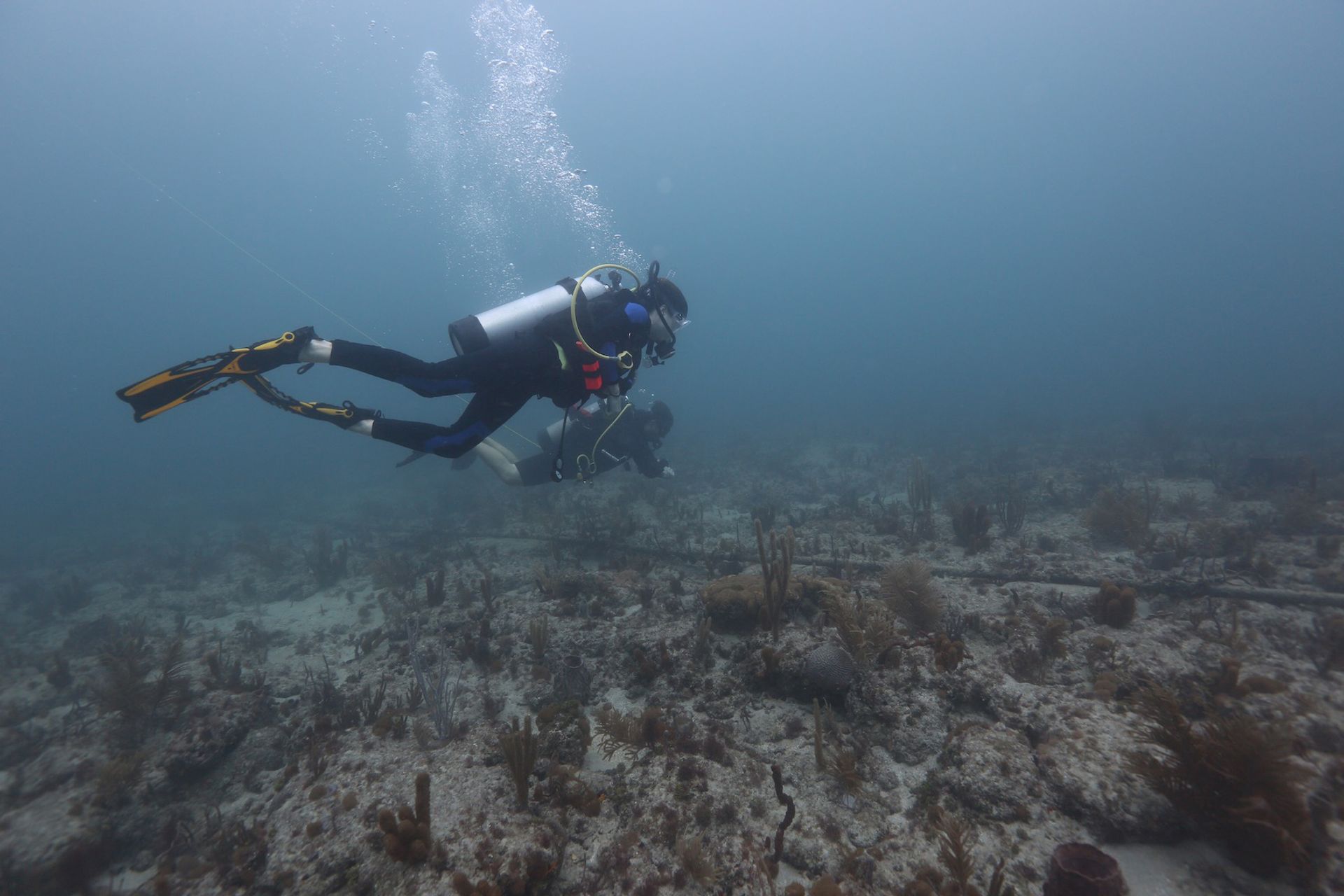It is cold and it is raining and I am 30 feet underwater, somewhere off the coast of Fort Lauderdale. In front of me, a dive guide is pointing to a thick cable encrusted with barnacles. This is a fibre-optic line, one of hundreds stretching across the bottom of the world’s oceans, connecting continents and carrying almost all global internet data.

On Friday, I joined a small group of scuba divers on an expedition to see three underwater cables found by the artist Trevor Paglen after painstaking research. Paglen, who spoke at Art Basel in Miami Beach this week about his work investigating mass surveillance, became interested in these submerged communication lines while working as a cinematographer on Citizenfour, a documentary about the NSA whistleblower Edward Snowden, who revealed that both the US and UK governments routinely tap these cables to collect citizens’ data.
“I am interested in art that helps us see the historical moment we live in,” said Paglen, whose past work includes charting secret US military bases in the desert. “But you have to do so much work to put yourself in a position to be able to see it.” In his search for the deep-sea cables, Paglen scoured sources such as telecommunication and maritime maps, on which underwater communication lines are marked so that ships do not drop anchor on them. He eventually narrowed down his search area to around one square mile off the coast of Florida.
The artist then teamed up with the underwater photographer Bill Lamp’l. Together, they started looking for the three submerged fibre-optic lines that Paglen had predicted would be there; a few dives later, they found them.
“We talk about the internet using mystifying metaphors like the cloud and cyberspace,” Paglen told the group of divers just before we jumped into the water, “but the internet is a material thing. It’s made of cables and tubes and switches.”

And in this particular place, the internet is also home to a dizzying array of underwater life: green, orange and blue parrotfish, sea fans, soft coral and sponges. An entire ecosystem thrives on top of the cables that carry our messages. Think about that the next time you send an email. And it’s not just small fish that congregate around these cables: sharks are known to chew on them too, perhaps attracted by their electromagnetic fields. “They’re trying to eat the cats out of the internet,” Paglen joked.
The artist’s search for underwater cables is only just beginning: Paglen said that he will be heading to Guam and Hawaii next. “I want to make images to try to help us understand the systems” that are prevalent today, he says. These include the greatest tool for free, widespread communication and research we have ever known—as well as our governments’ efforts to monitor and control it.


